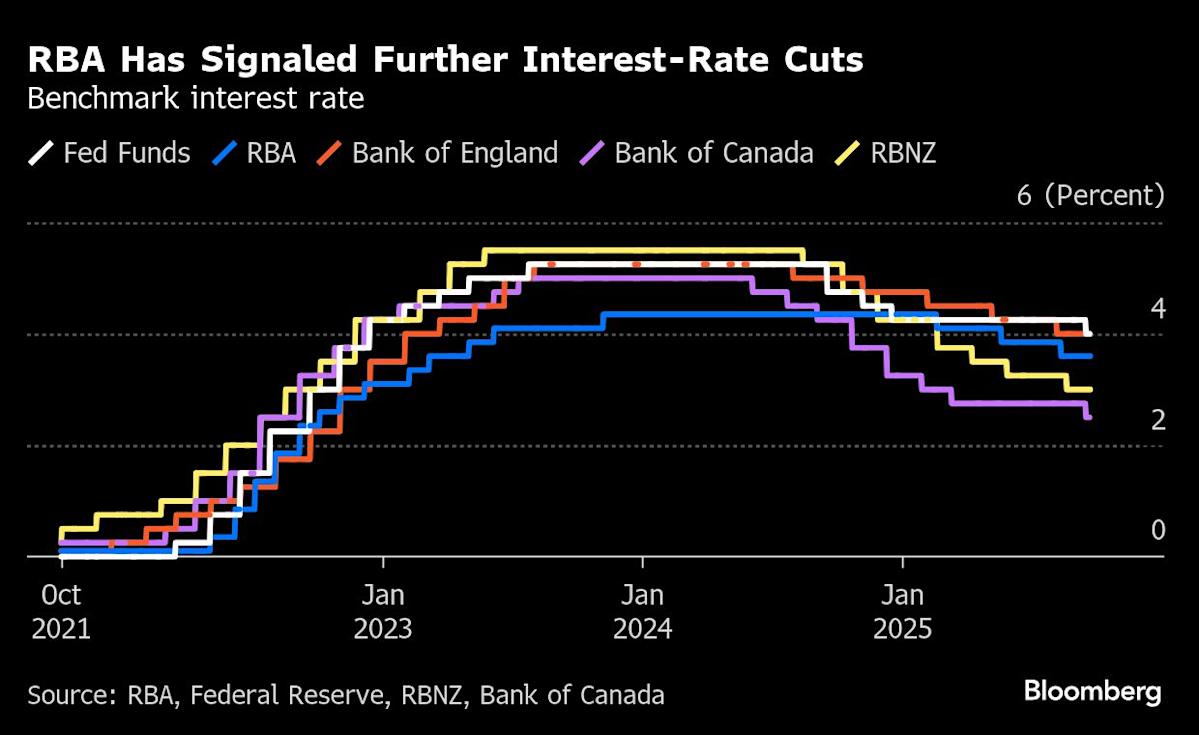Australia Monthly Inflation Accelerates to Top of RBA Target
(Bloomberg) — A gauge of Australia’s monthly inflation accelerated in August to the top of the Reserve Bank’s 2-3% target, supporting the case for interest rates to remain on hold and sending the currency higher.
The Consumer Price Index indicator climbed 3% from a year earlier, the highest reading since July 2024, official data showed Wednesday, compared with economists’ forecast of 2.9%. The RBA’s favored trimmed mean measure, which smooths out volatile items such as food and energy, slowed to 2.6% in August from 2.7% in the prior month.
Most Read from Bloomberg
The data, together with last week’s employment report showing ongoing tightness in the labor market, are likely to encourage RBA policymakers to stand pat at next week’s meeting and maintain a cautious outlook.
The currency erased losses to rise 0.2% and policy-sensitive three-year government bond yields climbed as traders pared expectations for the next rate cut. RBA meeting-linked swaps indicate the central bank will pause borrowing costs at its Sept. 29-30 meeting, with a 70% chance of a reduction priced for November.
Wednesday’s data showed that housing was among the largest contributors to the annual movement, driven by power prices. Others were food and alcohol.
The RBA cut its cash rate by a quarter-percentage point to 3.6% last month, its third reduction of the year. On Monday, Governor Michele Bullock said the rate-setting board will weigh recent evidence showing the economy has been performing in line or slightly stronger than anticipated at next week’s policy meeting.
Bullock said that inflation has eased substantially to be inside the RBA’s target and reiterated that the monthly CPI indicator is volatile and doesn’t provide a clean signal. She has expressed greater confidence in the comprehensive quarterly inflation report.
Wednesday’s figures also showed:
-
Electricity costs rose 24.6% in the 12 months to August
-
Rents rose 3.7% in August, the weakest annual growth since November 2022
“The annual rise in electricity costs is primarily related to households in Queensland, Western Australia and Tasmania having higher out-of-pocket costs in August 2025 than they did in August 2024,” Michelle Marquardt, ABS head of prices statistics, said in a statement.
The ABS will begin publishing a complete monthly measure of inflation from Nov. 26, addressing a long-standing gap in Australia’s economic data. The development will bring the nation in line with most of its developed-world peers.



Leave a Comment
Your email address will not be published. Required fields are marked *